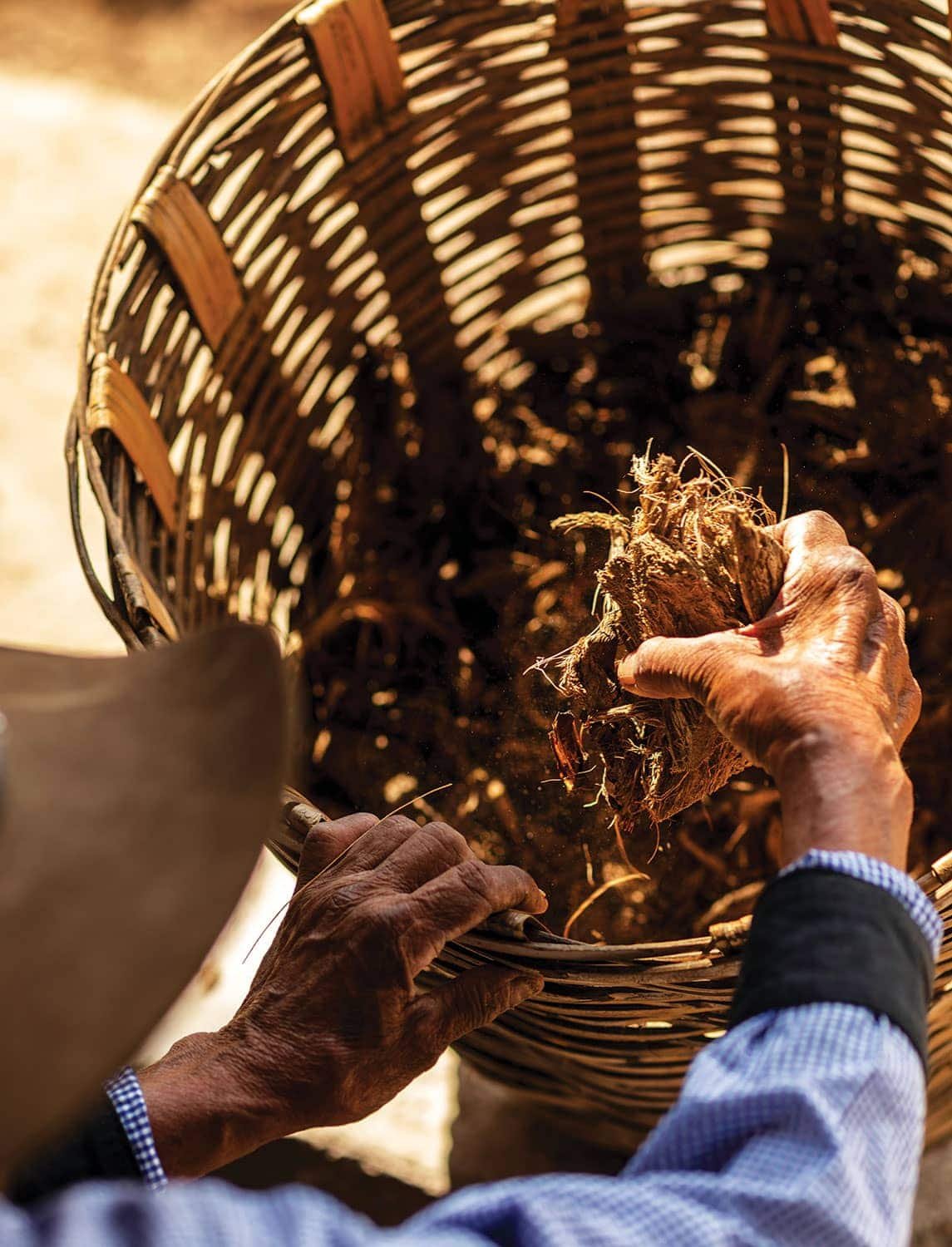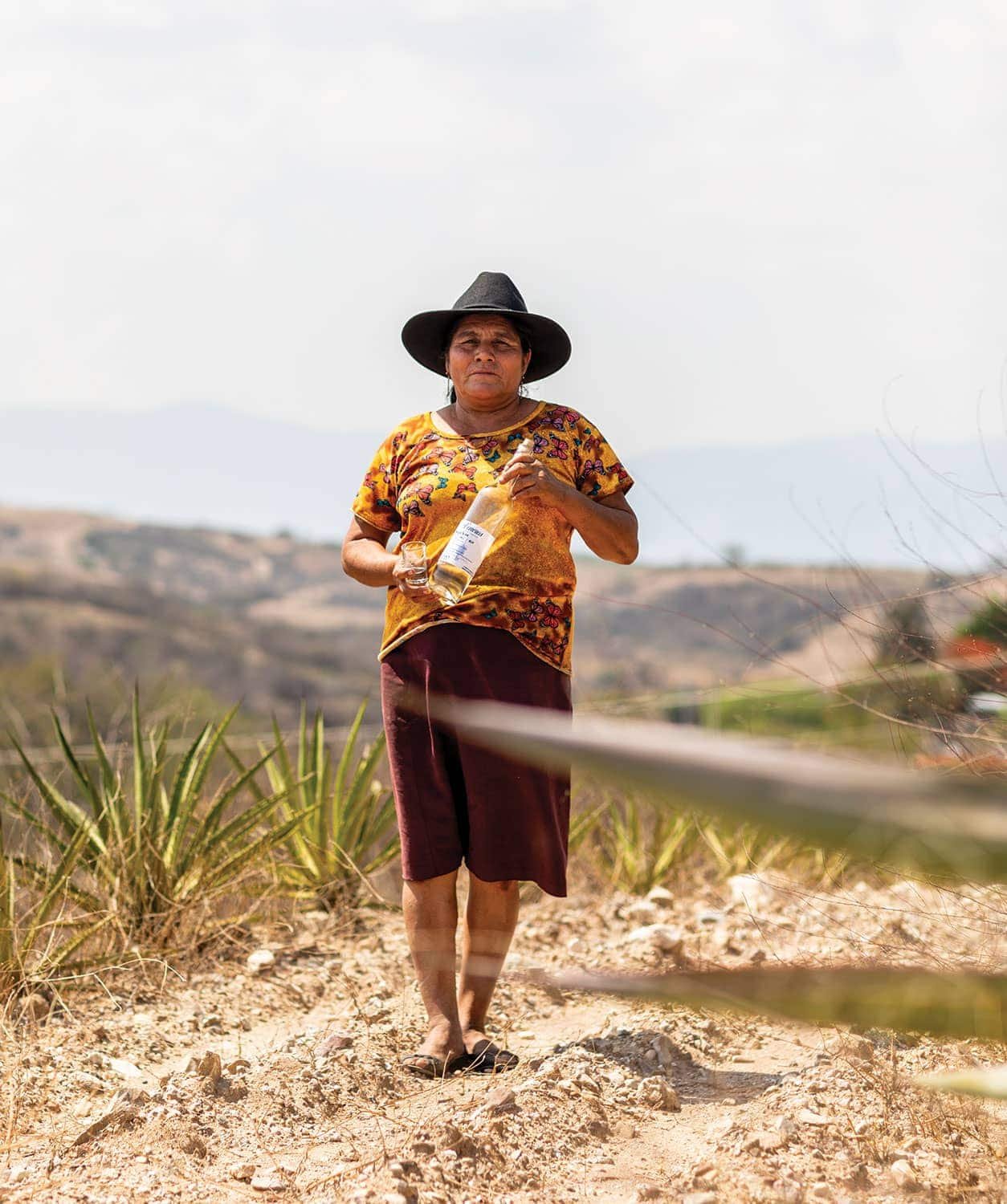Logoche is a small community of a little over 100 people not far from El Nanche in Miahuatlán. The village is rightfully famous for its concentration of mezcal production, with many producers belonging to the Grupo Productor Logoche cooperative. There’s an openness to mezcal production here—possibly the result of everyone working together on a few palenques until very recently—and many producers are experimenting with technology alongside traditional practices.
Paula Aquino Sanchez is a dominating presence at her family’s palenque. She and her husband, Hermogenes, have recently become well-known mezcal producers in the United States. Their mezcal, bottled as part of the Neta label, sells for up to $200 a bottle. Likewise, Sanchez commands an unusual level of respect in a country and region where traditional, rigid gender hierarchies are omnipresent. She often takes the lead on mezcal production, but is now in a position where she can pick and choose how she contributes. She’ll occasionally make a batch herself, like the cuixe she pours, laden with so much rich, cooked agave flavor it tastes of maple syrup. Still, she makes the smallest batches among her family because “I’m always in the kitchen,” she says.
Despite that, her presence is inseparable from the palenque. While her husband and youngest son, Jorge, weigh massive, freshly harvested espadín agaves at more than 250 kilos each, Sanchez tours around her family’s agave fields, pointing out medicinal herbs and other rare plants. Paula and Hermogenes have three sons and a daughter. They all work together at the palenque and she recalls how, “after school, I would say to my children, ‘Today is the day we learn distilling, or today we learn fermentation,’ and I would make them do that exact activity.”
AGAVE HEARTS.
Balancing a traditional matriarch’s duties on a farm in Mexico alongside making mezcal is a lifestyle few people (even those in her community) can understand. Sanchez’s path was nontraditional and born from necessity. She has few memories of her father, who also made mezcal and died when she was 6 years old. Alongside her older brother Eugenio, who has since also passed away, she was making mezcal at a very young age, primarily as a breadwinner for her impoverished family. Like Lalo, she initially helped by bringing food to the older men working on the palenque—her grandfather, uncles, and older brother—but she was doing the difficult, manual labor at a much younger age. There were only a handful of palenques in Logoche at the time, so everyone worked closely together, sharing knowledge and techniques.
While her grandfather was the strongest presence in teaching her the art of mezcal production, she considers her late brother her mentor. Like Tío Tello, they were taught by the CRM to double distill mezcal in the 2000s. Sanchez says she prefers the double-distilled mezcal because the old style “gave me headaches,” and is proud of the technical precision she honed in distilling alongside her late brother.“We notate everything now, and I can see that it yields more. We make fewer errors and are always improving.”











